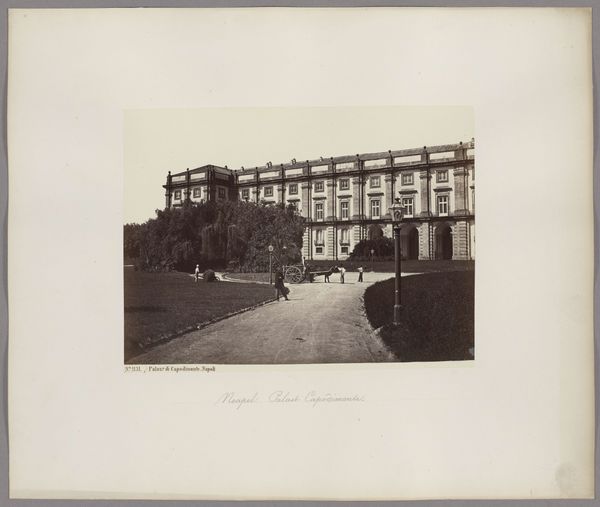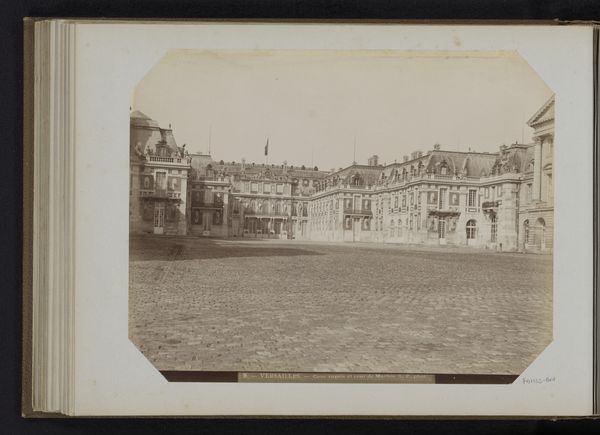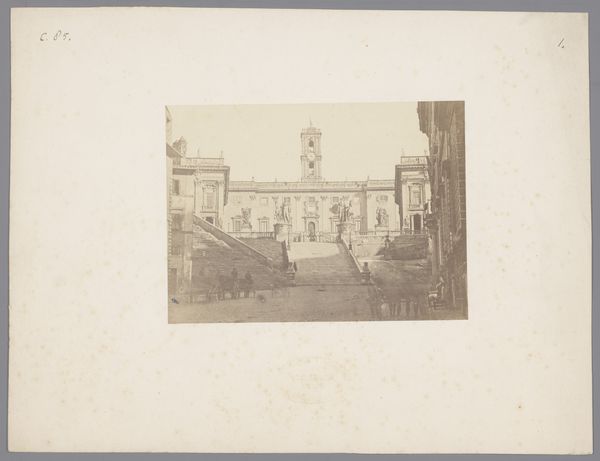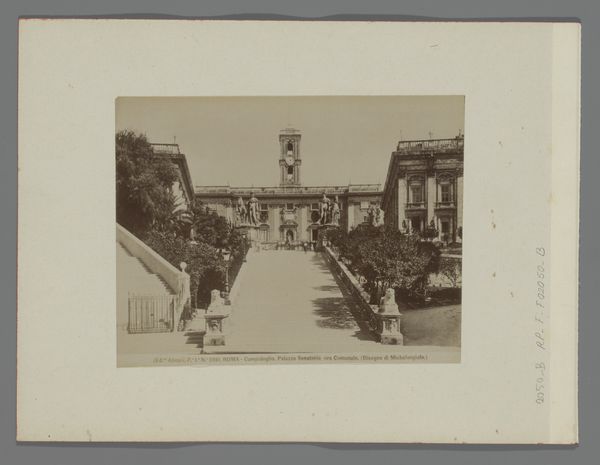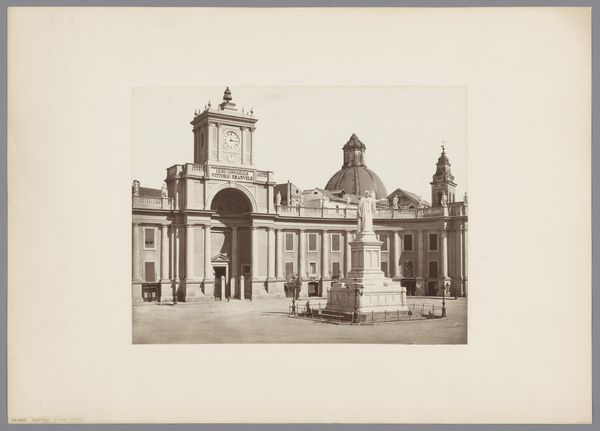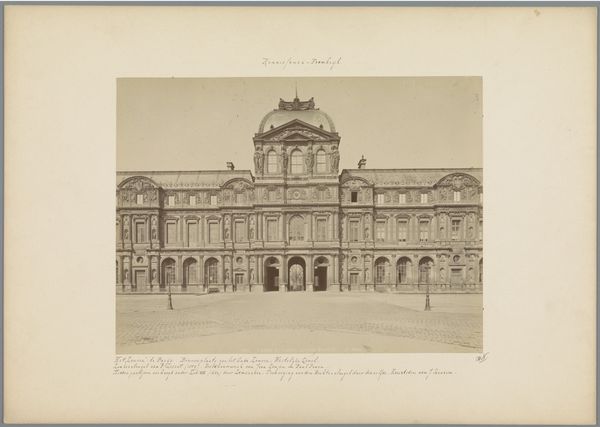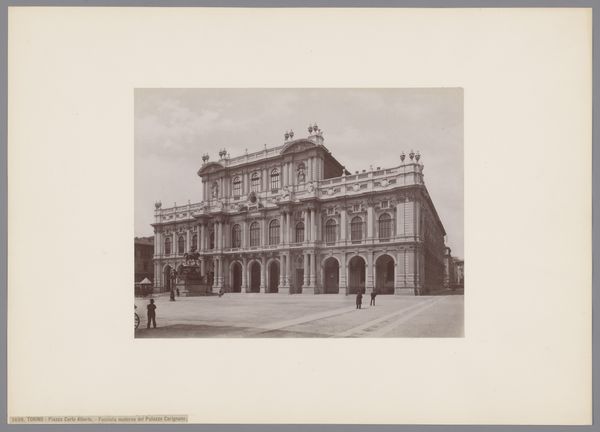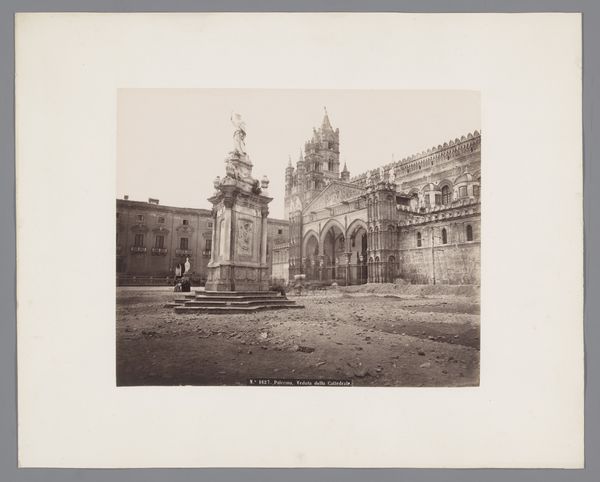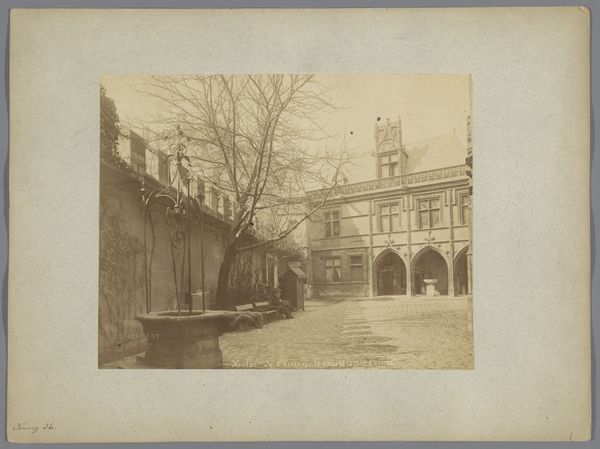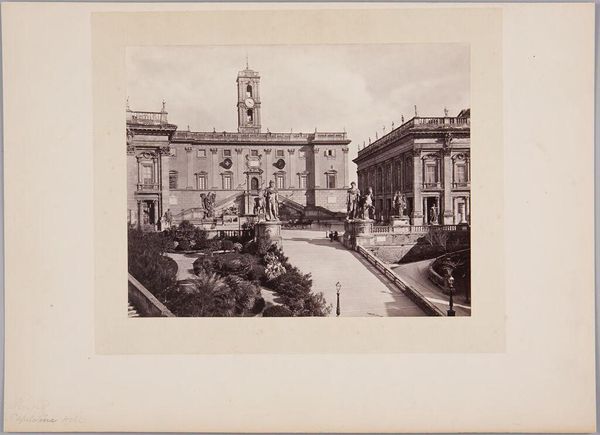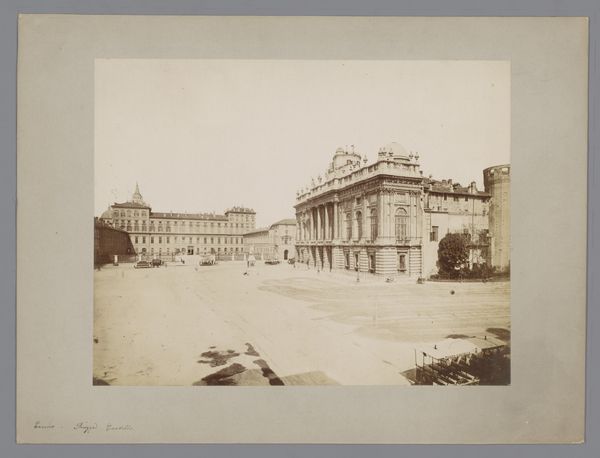
photography, albumen-print
#
landscape
#
photography
#
ancient-mediterranean
#
cityscape
#
italian-renaissance
#
albumen-print
#
realism
Dimensions: height 271 mm, width 378 mm, height 418 mm, width 507 mm
Copyright: Rijks Museum: Open Domain
Curator: Looking at this image, I feel like I'm gazing at a stage set. It's monumental, slightly austere. What’s your immediate impression? Editor: A grand approach. A sense of ceremony. All those steps leading somewhere important, yet everything seems so still, caught in a sepia dream. Curator: That sepia tint is a hallmark of the albumen print process, popular in the mid-19th century, around the time this image was created by Altobelli and Company. It’s titled “Gezicht op het Capitool in Rome, Italië,” or "View of the Capitol in Rome, Italy" in English, and dates back to sometime between 1865 and 1878. Editor: "View" is apt, but it’s such a controlled view. There’s such intentional composition, the way the light and shadows carve out those architectural details… it makes me think about power. It doesn't capture everyday life; it embodies historical gravitas. Curator: Precisely. The Capitoline Hill has been a seat of Roman authority for millennia, and this image, steeped in the aesthetics of Italian Renaissance architecture, invokes that deep lineage of power. The buildings themselves, the statues, and even the perfectly symmetrical staircase…they all communicate a visual language of order and authority. It is like the language is giving cultural meaning through repeated use of form. Editor: It also silences, in a way. Where are the people? Was the city really so hushed back then? I know this is realism in style, but it looks somehow artificially flawless, it's trying to reveal truth while simultaneously performing some notion of civic perfection. The lack of human subjects in the composition enhances that imposing quality. Curator: Well, the long exposure times of early photography made capturing moving subjects challenging, and more symbolicly it may be the desire to reveal what exists beyond human action. However, it directs our focus purely towards the enduring architecture. By drawing our eyes up the stairs towards these seats of Roman civilization it asks us what we really value, perhaps something enduring instead of fleeting. Editor: Perhaps it invites us to consider how present regimes make use of the vestiges of antiquity in their public image. After all, it is a stage setting, a tableau that still resonates in modern conceptions of power. It captures more than just buildings; it reveals our fascination with architectural continuity as if to establish some idea of enduring importance in public life. Curator: Yes, and I would say it speaks to the enduring appeal of Rome. Even today it's as a constant reminder of how much civilization can change, but also what values will endure the endless flow of time. Editor: Makes you wonder what symbols and images future civilizations will construct and how we'd decode them.
Comments
No comments
Be the first to comment and join the conversation on the ultimate creative platform.

